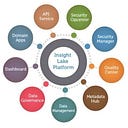Visual Understanding and Reasoning LLM Models
Large Language Models (LLMs) designed for visual understanding and reasoning have evolved significantly, enabling advancements in image captioning, scene comprehension, video analysis, and multimodal reasoning. This blog delves into the capabilities, performance, costs, and use cases of popular LLMs in the visual reasoning domain, including GPT, Gemini, Anthropic’s models, AWS Nova, LLaMA, Phi3, and more.
Let’s explore the top models, their performance, costs, and key capabilities to help you choose the right one for your needs.
Proprietary Models
GPT-4V (OpenAI)
GPT-4V is known for its strong performance in visual understanding and reasoning tasks
Key Capabilities:
- High accuracy in complex visual reasoning
- Multilingual support
- Low hallucination rates
Best For: Complex visual analysis, multilingual tasks, and general-purpose visual AI applications.
Gemini 1.5 Pro (Google)
Gemini 1.5 Pro offers competitive performance in visual tasks, often matching or surpassing other top models
Key Capabilities:
- Fast multimodal processing
- Video analysis (up to 30 minutes)
- Competitive performance on various benchmarks
Cost: $0.075 per 1M input tokens, $0.3 per 1M output tokens
Best For: Real-time visual analysis, video understanding, and cost-effective large-scale processing.
Claude 3 and 3.5 Sonnet (Anthropic)
Claude models excel in complex document understanding and diverse image analysis
Key Capabilities:
- High accuracy in information extraction
- Strong performance in document analysis
- Handles diverse image types and layouts
Best For: Document processing, financial analysis, and tasks requiring nuanced understanding of complex visual information.
Amazon Nova Models
Amazon Nova offers a range of models with varying capabilities
Nova Micro: Text-only model optimized for low latency and cost.Nova Lite:
- Processes images, videos, and text
- Handles up to 300K input tokens
- Excels in video, chart, and document understanding (VATEX, ChartQA, DocVQA benchmarks)
Nova Pro:
- 300K input token capacity
- State-of-the-art performance on visual question answering (TextVQA) and video understanding (VATEX)
- Strong in financial document analysis
Key Capabilities:
- Multimodal processing (text, images, videos)
- High-resolution image handling (up to 8000x8000 pixels)
- Supports fine-tuning and model distillation
- Covers over 200 languages
Best For: Enterprise applications, especially those requiring integration with Amazon services, multilingual support, and handling of diverse visual inputs.
Open-Source Alternatives
MiniCPM-Llama3-V2.5
This Llama3-based model offers impressive vision capabilities despite its smaller size
Key Capabilities:
- Processes images up to 1.8 million pixels
- Achieves 700+ score on OCRBench
- Excellent OCR capabilities
Best For: OCR tasks, general visual understanding in resource-constrained environments.
Qwen2-VL-2B
Part of a series trained on high-quality, large-scale data
Key Capabilities:
- Covers over 29 languages
- Focus on diverse and resilient system prompts
Best For: Multilingual visual tasks, applications requiring robust prompt handling.
InternVL
Particularly effective for complex OCR tasks
Key Capabilities:
- Excels in extracting text from complex layouts
- Relatively fast inference speed
Best For: Document processing with complex layouts, OCR-heavy applications.
Phi-3-vision-instruct (Microsoft)
A 4.2 billion parameter model with multimodal capabilities
Key Capabilities:
- Processes both image and textual prompts
- Uses CLIP ViT-L/14 as image encoder
Best For: Research applications, tasks requiring both visual and textual understanding.
Choosing the Right Model
For Enterprise-Grade Applications:
- GPT-4V, Gemini 1.5 Pro, or Amazon Nova Pro for comprehensive visual understanding and reasoning.
- Claude 3.5 Sonnet for complex document analysis.
For Cost-Effective Solutions:
- Amazon Nova Lite or Gemini 1.5 Flash for a balance of performance and cost.
- Open-source models like MiniCPM-Llama3-V2.5 for specific tasks like OCR.
For Multilingual Applications:
- Qwen2-VL-2B or Amazon Nova models for their extensive language coverage.
For Video Analysis:
- Gemini 1.5 Pro or Amazon Nova models, which specifically support video inputs.
For Research and Experimentation:
- Open-source models like Phi-3-vision-instruct or InternVL for customization and local deployment.
Innovative Techniques
To enhance model performance, consider techniques like:
- Target Prompting: Improves accuracy in retrieving detailed information from specific document sections
- Follow-Up Differential Descriptions (FuDD): Helps resolve ambiguities in image classification tasks
- Chain-of-Comparison (CoC): Enables systematic comparison of various aspects of predictions
By carefully considering your specific needs, budget, and the strengths of each model, you can select the most appropriate visual understanding and reasoning LLM for your application.
